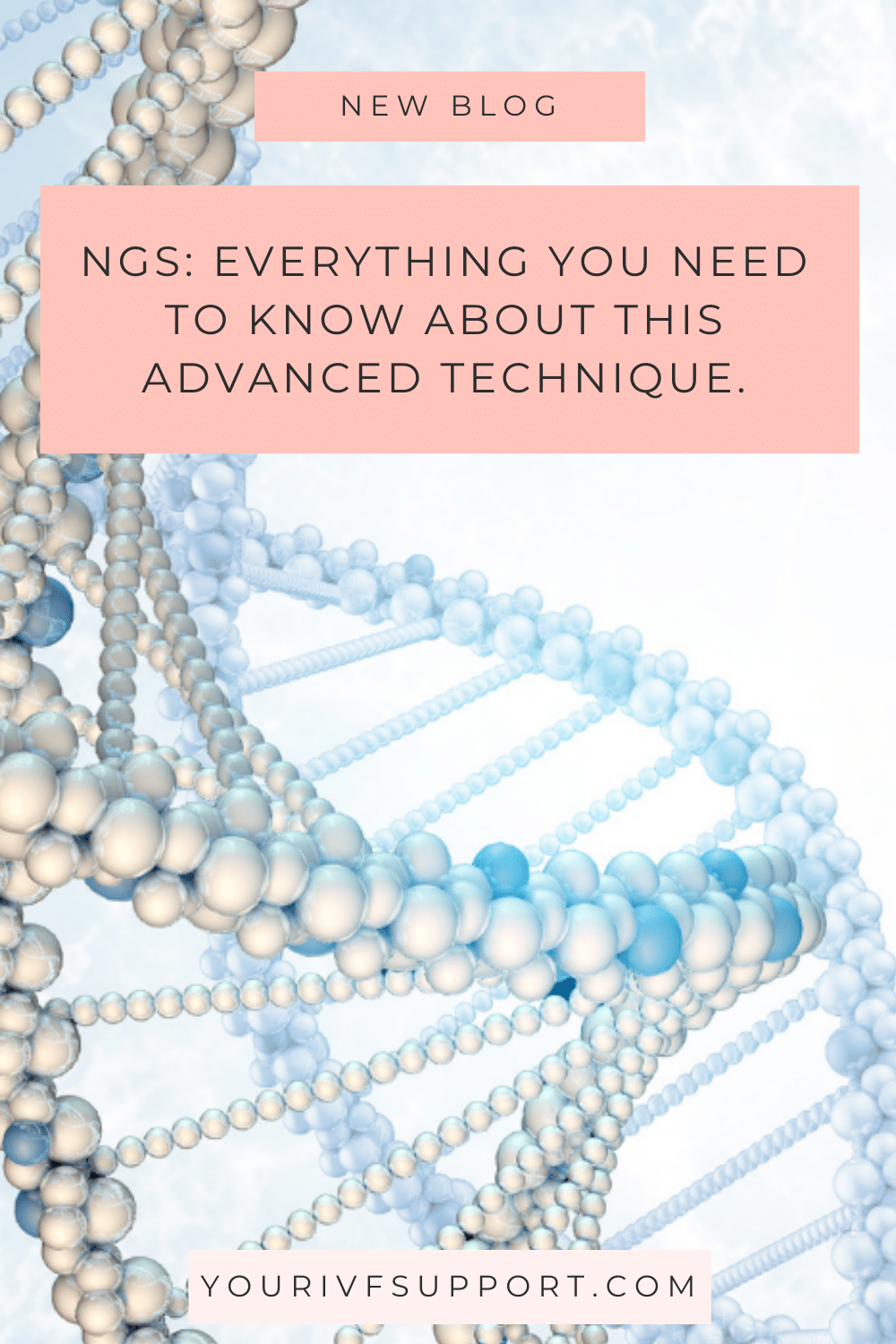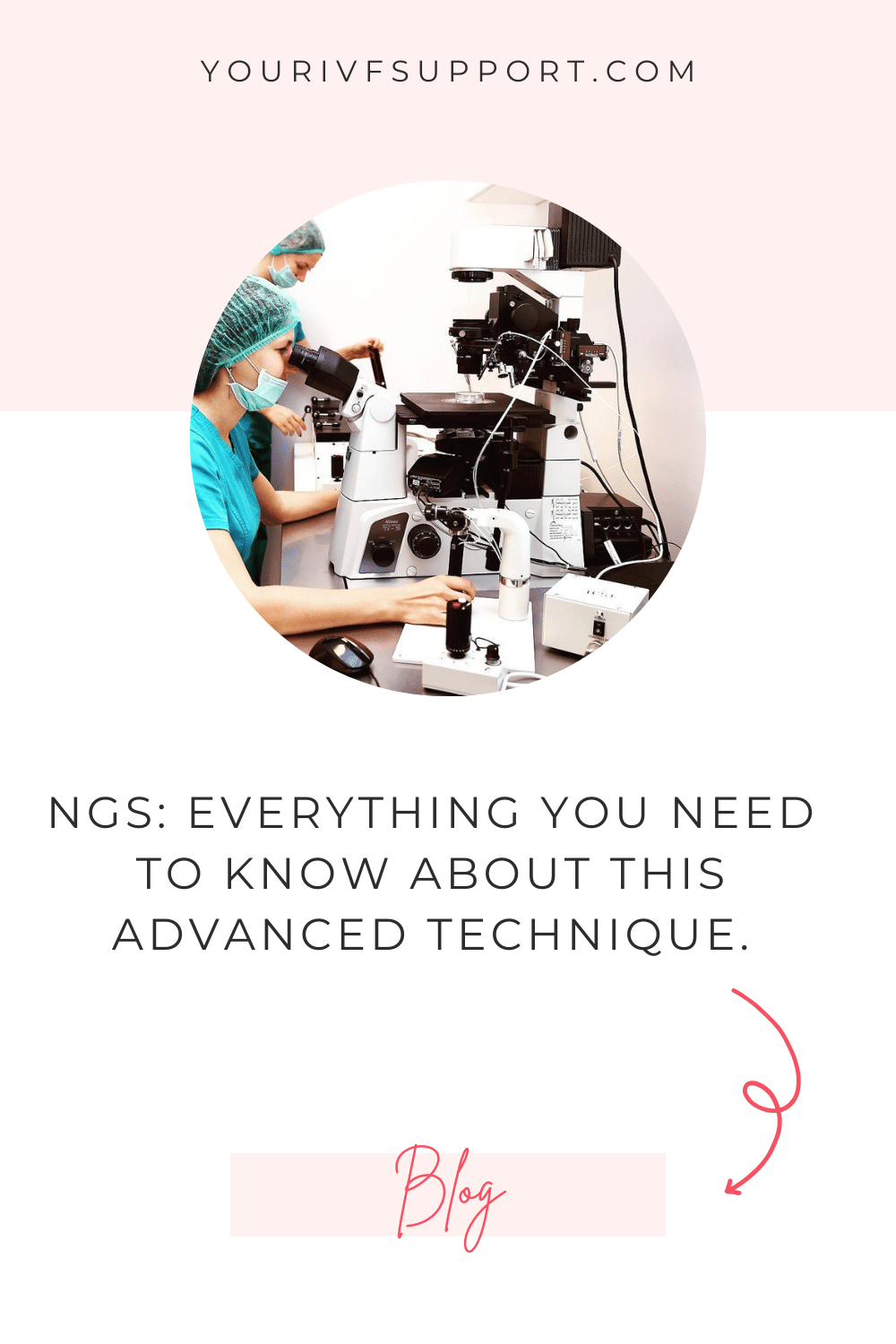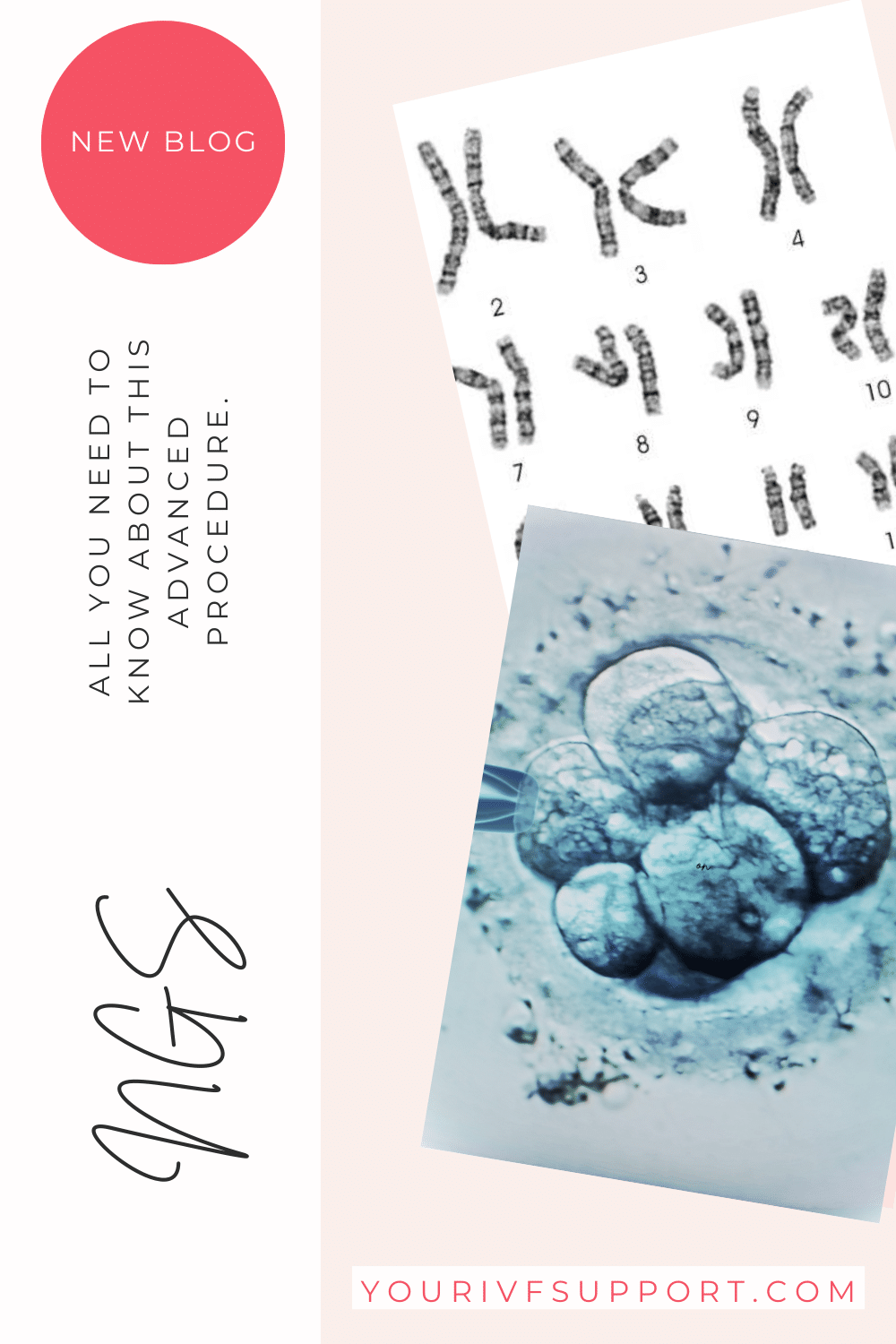There are many reasons why couples who want to have children may have difficulty getting pregnant. One of the reasons could be a genetic problem leading to infertility or miscarriage. In such cases, genetic testing can help to identify the problem and find possible solutions. One method of genetic diagnosis that has become increasingly popular in recent years is called 'next-generation sequencing' (NGS). But what exactly is NGS and how does it work? In this blog we take a closer look.
How does NGS work in the fertility context?
When couples have difficulty conceiving naturally, in vitro fertilisation (IVF) can be a solution. IVF involves extracting eggs from the woman and fertilising them in the laboratory with sperm from her partner or a donor. The fertilised eggs are then grown in the laboratory before being transferred to the woman's uterus.
However, one of the problems with IVF treatment is that not all fertilised eggs result in a healthy baby. One reason for this can be a genetic abnormality, either in the woman or in the man. If a fertilised egg has a genetic abnormality, this can lead to miscarriage or genetic disease in the child.
In such cases, NGS can offer a solution. NGS involves analysing the DNA of the fertilised egg to see if it has a genetic abnormality. This analysis can be done before the egg is placed in the woman's womb to ensure that only eggs with a normal genetic profile are used.
The NGS process starts by amplifying the DNA of the fertilised egg. This is done using the polymerase chain reaction (PCR), which breaks the DNA into many copies of the same fragment. These fragments are then sequenced, which means that the genetic information in each fragment is broken down into its building blocks (nucleotides) and read in the correct order.
Sequencing is usually carried out using a high-throughput sequencer, which can run thousands of sequences simultaneously. The sequences produced are then analysed using computer algorithms to determine the genetic information of the egg. This information is then compared to a reference database to identify any deviations or abnormalities in the DNA sequence.
If a fertilised egg has a genetic abnormality, it can be excluded to ensure that only eggs with a normal genetic profile are used for IVF treatment. [This increases the likelihood that IVF treatment will result in a successful pregnancy.
It is important to note that NGS is not perfect and cannot detect all genetic abnormalities. It can also give false positive or false negative results. Therefore, it is important to work with a qualified geneticist or reproductive health professional to interpret NGS results and make appropriate decisions.
NGS offers a promising way to help couples trying to have children by increasing the likelihood of a successful pregnancy. By identifying genetic abnormalities in fertilised eggs, NGS can help reduce the likelihood of miscarriage or genetic disease in the child. In addition, NGS can be used in couples at increased risk of genetic disease by directly testing the couple's eggs or sperm.
However, the use of NGS in IVF treatment is also controversial, as there are some ethical concerns about selecting embryos based on their genetic characteristics. Some critics argue that this could open the way to a designer baby, while supporters of NGS argue that it will help to improve the health and well-being of children.
Either way, NGS is a powerful tool that can be used in IVF treatment to help couples who want to have children plan their families. However, it is important that the decision to use NGS is always based on sound advice and a full understanding of the potential and limitations of this technology.
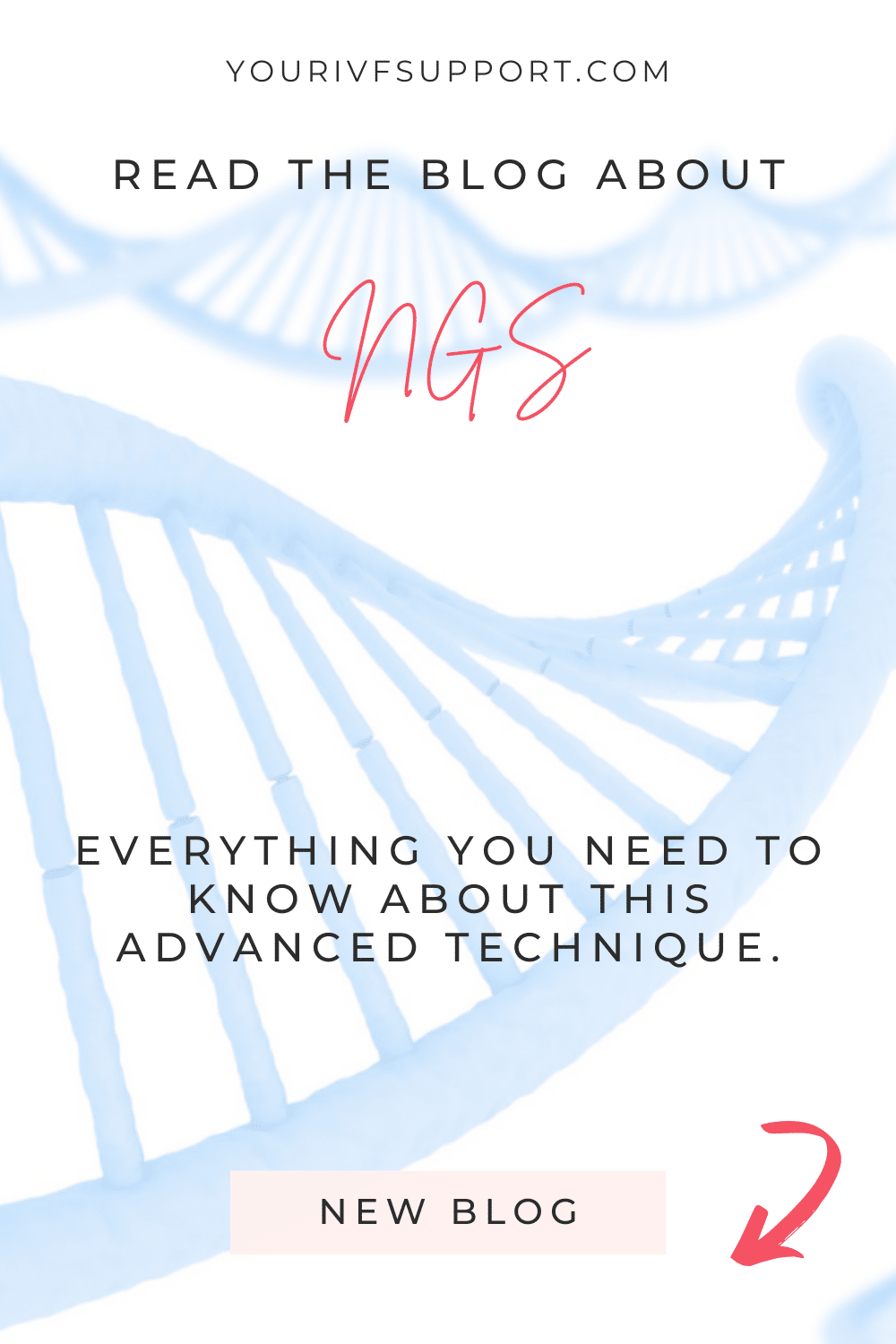
Why is NGS becoming more popular with couples who want to have children?
In recent years, the use of NGS has become increasingly popular among couples who want to have children. But why is this? Here are some reasons:
Higher success rates:
The use of NGS in IVF can lead to higher success rates. By identifying and ruling out genetic abnormalities in the fertilised eggs, NGS can help reduce the likelihood of miscarriage or genetic disease in the child, increasing the chances of a successful pregnancy.
Reducing miscarriages:
Miscarriage is a common complication for couples trying to have children. NGS can help reduce the risk of miscarriage by identifying and excluding genetic abnormalities in the fertilised eggs.
Reducing genetic disease:
NGS can also help reduce genetic disease in children by identifying and correcting genetic abnormalities in fertilised eggs. This can help ensure that children are born healthier and have a better quality of life.
Better planning:
NGS allows couples who want to have children to plan and prepare better by using genetic testing prior to IVF treatment. This allows couples to prepare for potential risks and make decisions in advance.
Technological advances:
NGS technology has made great strides in recent years. The cost of performing NGS analysis has decreased and the accuracy of the results has improved. This has helped to make NGS accessible to a wider range of couples trying to have children.
Although there are many advantages to using NGS in IVF treatment, it is important to note that there are also some disadvantages and ethical concerns. Some critics argue that selecting embryos for their genetic characteristics could open the way to a designer baby. It is therefore important that the decision to use NGS is always based on sound advice and a full understanding of the potential and limitations of the technology.
Despite these concerns, NGS is becoming increasingly accepted as an innovative technology for couples wishing to have children. It is expected that the use of NGS will continue to grow in the future, helping couples wishing to have children to build healthy and happy families.
What are the advantages of NGS over other genetic tests?
NGS is a relatively new method of genetic diagnosis that has become increasingly popular in recent years. Compared to other methods of genetic diagnosis, NGS offers a number of advantages that make it an attractive option for couples trying to have children. Here are some of the advantages of NGS over other genetic testing methods:
Higher resolution:
NGS can identify genetic abnormalities with greater resolution and precision than other genetic testing methods. It can sequence millions of DNA fragments simultaneously, allowing genetic variations to be identified with high resolution.
Greater coverage:
NGS has greater coverage of the genome than other genetic diagnostic methods. It can sequence the entire genome, making it possible to detect changes in all genes and regions of the genome.
Multiple applications:
NGS has broader applications than other methods of genetic diagnosis. It can be used to diagnose disease, determine disease risk, predict drug response and study genetic abnormalities in IVF.
Lower costs:
The cost of NGS analysis has fallen significantly in recent years. As a result, NGS has become an affordable option for a wider range of couples who want to have children.
Less invasive:
Unlike some other genetic tests, NGS is less invasive. It usually only requires a blood or tissue sample and is less stressful for patients.
Faster results:
NGS provides faster results than other genetic testing methods. Sequencing and analysis can be completed in a matter of days, allowing decisions to be made more quickly.
NGS is a powerful and attractive option for couples who want to have children and are looking for genetic diagnosis. Compared to other methods of genetic diagnosis, NGS offers higher resolution, greater coverage, broader applications, lower costs, less invasive procedures and faster results. However, it is important that couples wishing to have children carefully consider all their options and work with a qualified geneticist or reproductive health professional to make the best decision for their situation.
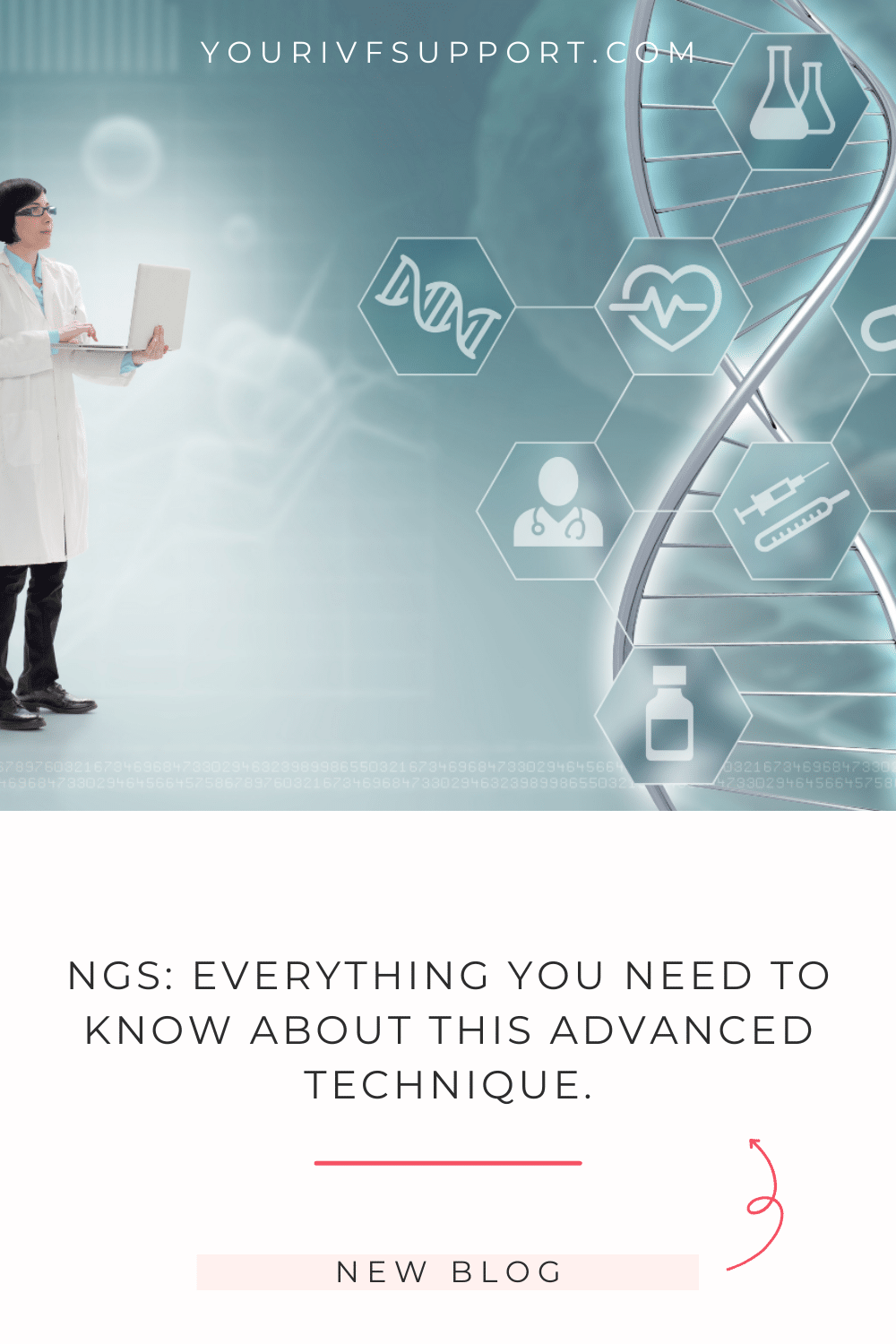
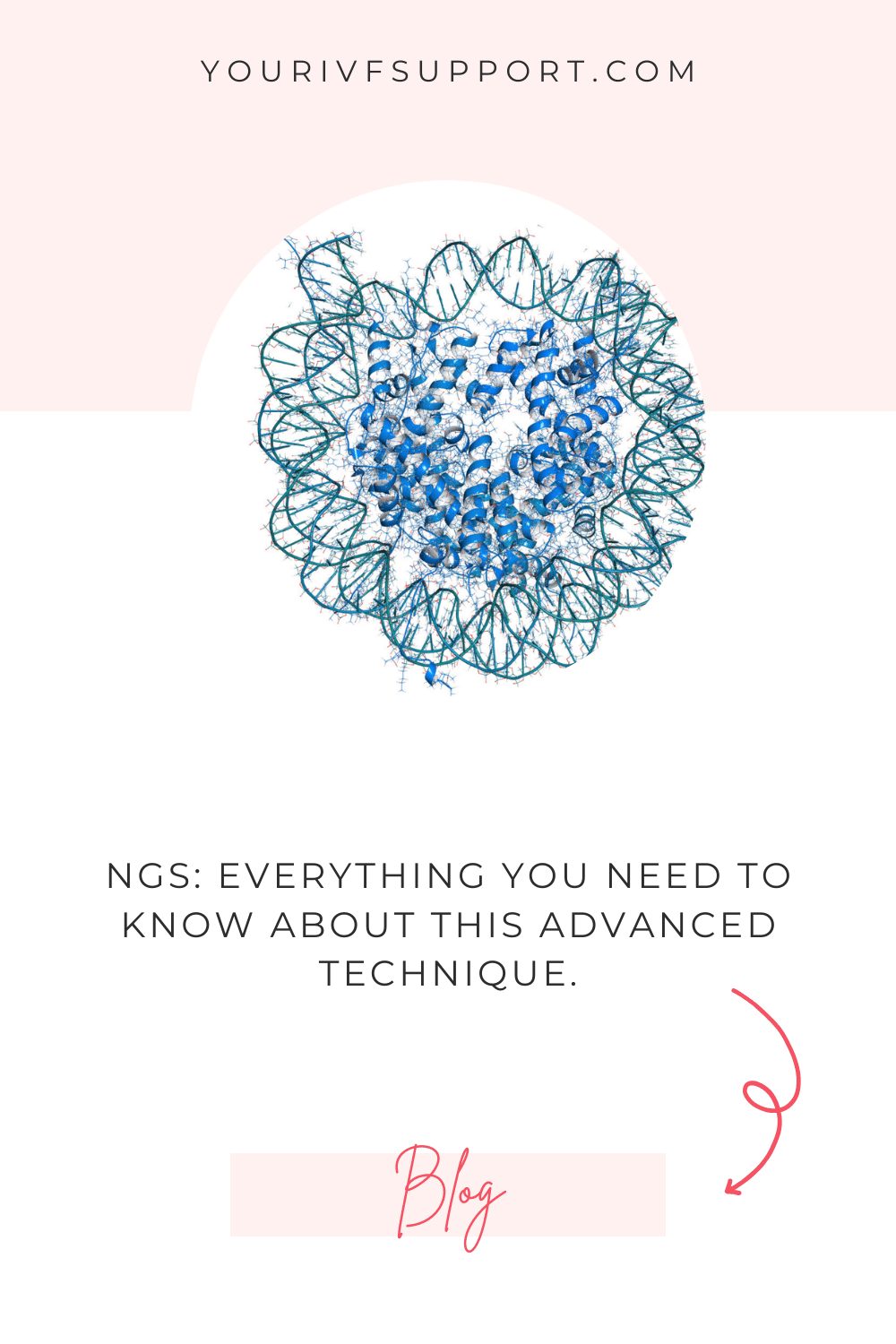
Are there any disadvantages to NGS compared to other genetic tests?
Although NGS is a powerful and attractive option for couples wishing to have children, there are some disadvantages to NGS compared to other methods of genetic diagnosis. Here are some of the disadvantages of NGS:
Complexity:
NGS is a complex process that requires a large number of steps and analyses. This can lead to higher costs and longer waiting times.
Error prone:
NGS is prone to error. Errors can occur during sequencing or analysis, which can lead to false-positive or false-negative results. It is therefore important that NGS results are always checked by a qualified expert.
Limited accuracy:
NGS has limited accuracy. It cannot detect all genetic abnormalities and has difficulty identifying structural changes in the genome.
Data Analysis:
The analysis of NGS data requires extensive knowledge of bioinformatics and genomics. It also requires a well-developed bioinformatics infrastructure to handle the large amounts of data.
Ethical concerns:
The use of NGS in IVF treatment has raised ethical concerns. Some people fear that selecting embryos for their genetic characteristics could open the way to designer babies.
NGS has many advantages over other methods of genetic diagnosis. However, it is important to note that there are also some disadvantages that need to be considered. Couples wishing to have children should be aware that the decision to use NGS should always be based on sound advice and a full understanding of the possibilities and limitations of this technology.
How does NGS treatment work?
NGS is a relatively new method of genetic diagnosis used in IVF treatment to identify and rule out genetic abnormalities in the fertilised eggs. Here is a step-by-step guide to how NGS treatment typically works:
Counselling:
Prior to NGS treatment, couples who wish to have a child will receive counselling from a qualified reproductive physician or geneticist. During this consultation, the options and limitations of NGS are explained and the benefits and risks are discussed.
Genetic testing:
Before NGS treatment, both partners are tested for genetic abnormalities to see if they are carriers of certain diseases. If a genetic abnormality is found in one or both partners, NGS can help reduce the risk of passing it on to the child.
Stimulating the ovaries:
In IVF treatment, the woman is usually given hormones to stimulate the ovaries and increase the number of eggs available for fertilisation.
Egg retrieval:
When the eggs have matured, they are removed from the ovaries in a surgical procedure. The eggs are usually grown in a laboratory until they are ready to be fertilised.
Fertilisation of the eggs:
In a laboratory, the eggs are fertilised with sperm from your partner or a donor to create embryos. The embryos are usually kept in culture for several days to see how they develop.
NGS analysis:
Cells are usually taken from the embryos on the fifth day after fertilisation, when they are in the blastocyst stage. The collected cells are sent for NGS analysis to identify genetic abnormalities. Once the cells have been collected, the embryos are immediately frozen and the patient can go home. The embryos are usually transferred in a later cycle, after the results of the NGS analysis are known. As the tests can take several days, couples wishing to have children may wait several weeks before embryo transfer.
Embryo selection:
The results of the NGS analysis are usually sent back to the reproductive physician or geneticist. Based on these results, the embryos that are free of genetic abnormalities are selected and prepared for transfer into the woman's uterus. In some countries and clinics, the results of the NGS analysis are openly displayed, where the X and Y chromosomes can also be seen to identify the sex of the embryos,[VD1] but sex selection is controversial and is not offered in some countries and clinics. The decision to use sex selection should always be based on informed counselling and ethical considerations.
Embryo transfer:
The selected embryos are frozen and the patient must return to the clinic at a later date for cryotransfer. Cryotransfer involves thawing the frozen embryos and transferring them into the woman's uterus. Cryopreservation is a relatively simple procedure and is usually carried out under local anaesthetic. After cryopreservation, the woman must wait a few days before taking a pregnancy test. If the test is positive, the pregnancy will begin.
Pregnancy test:
After the embryo transfer, the woman must wait a few days before taking a pregnancy test. If the test is positive, the pregnancy will begin.
Carrying the pregnancy to term:
Once the pregnancy is confirmed, the woman is usually followed up by her doctor to ensure that the pregnancy is successful.
NGS is a complex but effective method of genetic diagnosis that can help couples trying to have children to identify and rule out genetic abnormalities in embryos. Although NGS involves a number of steps and risks, it can be an attractive option for couples trying to have children to increase their chances of a successful pregnancy. However, it is important that couples who want to have children carefully consider all their options and work with a qualified geneticist or reproductive health professional to make the best decision for their situation.
"In some countries and clinics, the results of NGS analysis are openly displayed, where you can also see the X and Y chromosomes to identify the sex of the embryos."
Are there any risks or side effects associated with NGS treatment?
NGS treatment is a relatively safe method of genetic diagnosis used in IVF to identify and exclude genetic abnormalities in embryos. Although NGS treatment is generally safe, in rare cases there may be risks or side effects. Here are some of the possible risks or side effects:
Miscarriage:
NGS treatment can increase the risk of miscarriage. Selecting embryos for genetic abnormalities may reduce the risk of miscarriage, but there is still some risk.
Infections:
In rare cases, infections can occur during the collection of cells from embryos.
Missing or unclear results: In some cases, the results of NGS analysis may be incorrect or inconclusive. This can lead to uncertainty or delays in treatment.
Multiple pregnancies:
IVF treatment can, in rare cases, result in multiple pregnancies, which may carry a higher risk of complications.
Ethical concerns:
Some people have ethical concerns about NGS analysis, particularly in relation to sex selection or the risk of selecting embryos based on certain genetic characteristics.
It is important to note that most risks or side effects of NGS treatment are rare and the treatment is considered safe overall. However, couples wishing to have children should always work with a qualified reproductive health professional or geneticist to discuss their risks and options and to ensure that they are fully informed about their choices.
What does NGS treatment cost?
The cost of NGS treatment can vary depending on the country, the clinic and the type of treatment. Prices also vary between the US and Europe. Here are some of the costs that may be associated with NGS treatment:
Hormone stimulation:
The cost of hormone stimulation varies by country and clinic. In Europe, it can cost between EUR 1,000 and EUR 2,500.
Egg collection and IVF treatment
The cost of egg collection and IVF treatment as a whole, including embryo transfer, also varies by country and clinic. In Northern Cyprus, the cost can start from €3,000.
NGS analysis:
The cost of NGS analysis depends on the number of embryos to be analysed and can vary by country and clinic. In Northern Cyprus, the cost of NGS analysis can start at EUR 2,500.
In the USA, the cost of NGS treatment is generally much higher than in Europe.
Hormone stimulation can cost between $3,000 and $5,000 in the US, while IVF treatment can cost between $10,000 and $20,000 in total. The additional cost of NGS analysis per embryo can range from $5,000 to $10,000.
It is important to note that these prices are estimates only and may vary depending on the country, clinic and type of treatment. Couples wishing to have children should always find out the cost in advance and talk to their doctor or clinic about funding and insurance options.
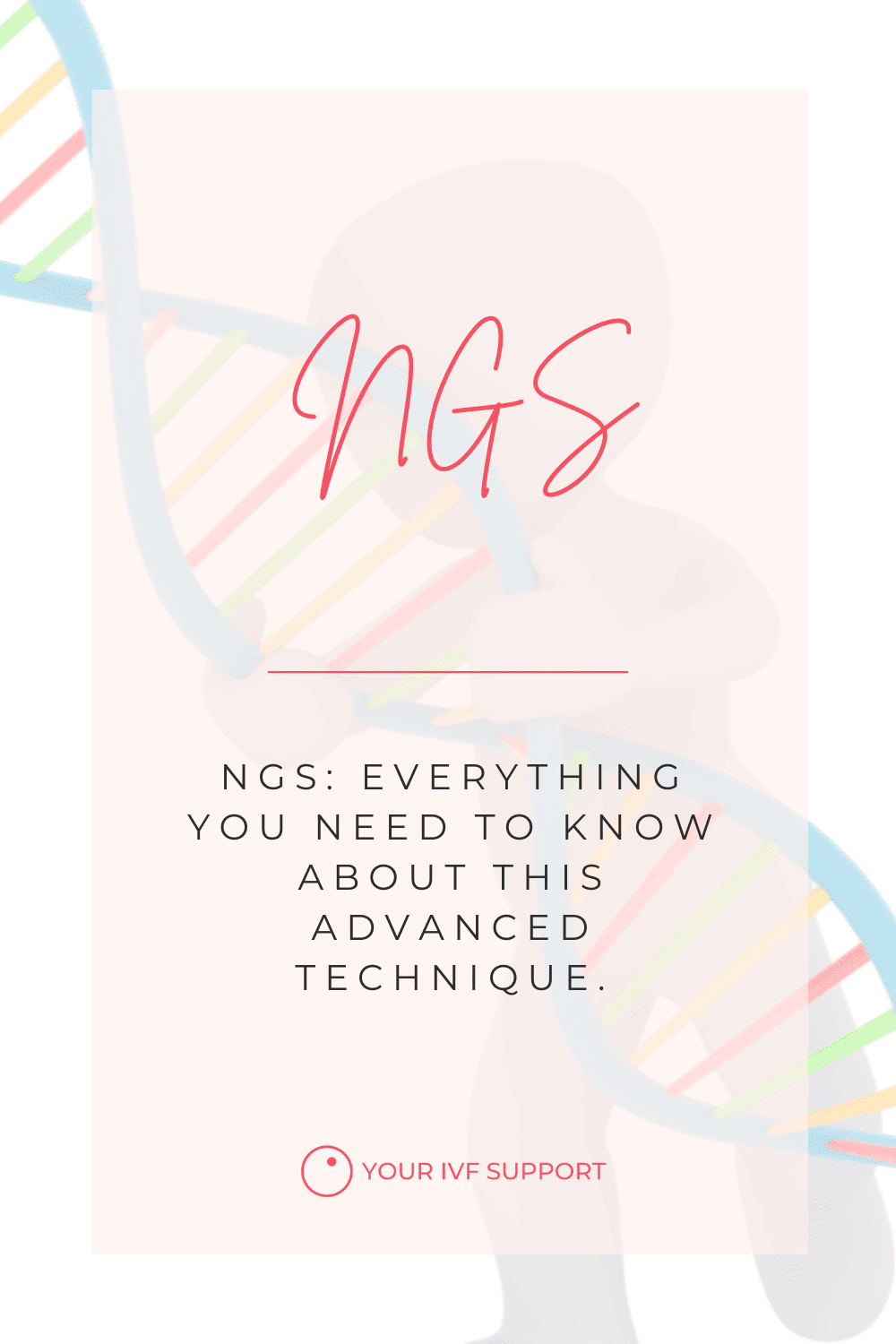
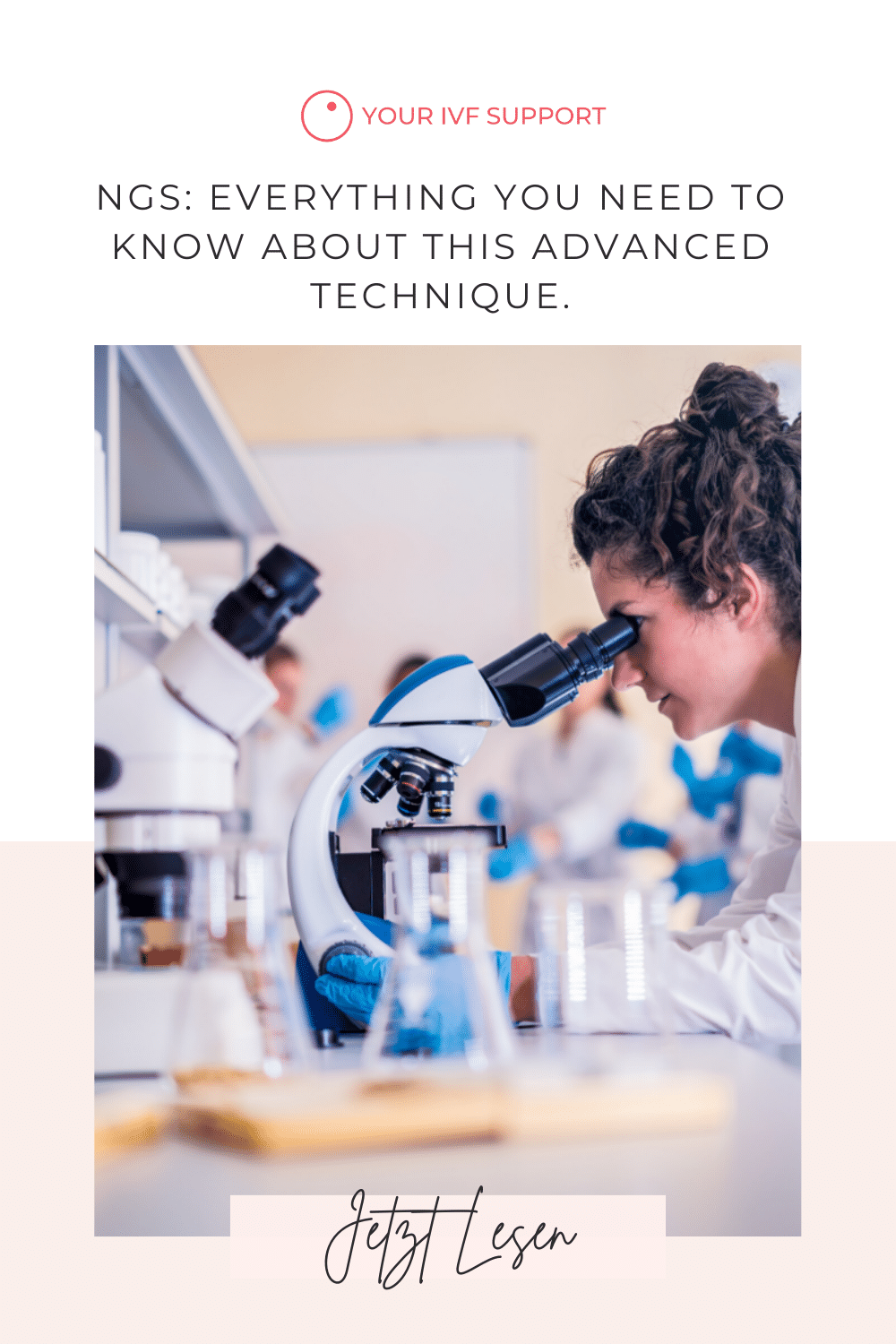

What are the chances of success with NGS treatment?
The chances of success of NGS treatment depend on several factors, such as the woman's age, the number and quality of the embryos, and the experience of the reproductive physician or geneticist. Here are some of the factors that can affect the chances of success of NGS treatment:
The woman's age:
A woman's age is an important factor in the success of NGS treatment. Women over 35 usually have a lower pregnancy rate than younger women.
Number and quality of embryos:
The number and quality of embryos selected after NGS analysis affect the chances of success of NGS treatment. The more quality embryos available, the higher the chances of success.
Experience of the reproductive physician or geneticist:
The experience of the reproductive physician or geneticist can also influence the chances of success of NGS treatment. An experienced doctor or geneticist can optimise embryo selection and transfer to increase the pregnancy rate.
The chances of success of NGS treatment vary depending on the country, clinic and type of treatment. In general, the pregnancy rate after NGS treatment is 50-60%. This means that about half of women become pregnant after NGS treatment.
Some studies suggest that the pregnancy rate per cycle may be higher when euploid embryos are used. For example, a 2017 study found that the pregnancy rate per cycle for women under 38 who were transferred with euploid embryos was about 65%, compared to a pregnancy rate of about 45% for women who were transferred with non-euploid embryos.
There are also studies suggesting that multiple cycles may increase pregnancy rates. For example, a 2019 study found that pregnancy rates were significantly higher in women who had repeated NGS treatments with euploid embryos compared with women who had only one treatment cycle.
It is important to note that the chances of success with NGS treatment depend on many factors and cannot be guaranteed. However, couples wishing to have children should always consult a qualified reproductive physician or geneticist to discuss their individual chances of success and to ensure that they are fully informed.
What are the ethical implications of NGS in relation to having children?
The use of next-generation sequencing (NGS) in the context of childbearing has some ethical implications that should be discussed. Here are some of the key ethical considerations:
Selection of embryos:
One of the most controversial ethical issues surrounding NGS is the selection of embryos on the basis of genetic characteristics. NGS can be used to test embryos for genetic abnormalities, but also for other characteristics such as sex or certain diseases. The decision on which embryos are selected can be potentially discriminatory and lead to questions of justice.
Impact on society:
The use of NGS may have an impact on society, particularly where issues of genetic inheritance are concerned. The ability to identify genetic abnormalities or diseases through NGS may lead to issues of discrimination and stigma.
Privacy:
The use of NGS may also raise data protection and privacy issues. In particular, where genetic tests provide information about the likelihood of certain diseases or traits, this information may have potentially undesirable consequences for the individuals concerned.
Cost and access:
The use of NGS may also raise issues of access and cost. The cost of NGS is currently high and not accessible to all couples wishing to have children. The use of NGS may also create a gap between those who can afford such treatment and those who cannot.
It is important that these ethical implications are carefully considered when using NGS for infertility. Couples should always consult qualified reproductive physicians and geneticists to ensure that they are fully informed and that their decisions are in line with their personal values and beliefs.
Where can you get NGS treatment?
Next-generation sequencing (NGS) is a relatively new technology in reproductive medicine, and more and more clinics in Europe are offering it. Here are some countries where couples who are trying to have children can have NGS treatment:
Spain:
Spain is known for its leadership in reproductive medicine and offers a wide range of NGS treatments. The cost of NGS treatment in Spain varies depending on the clinic and the number of embryos tested.
Czech Republic:
The Czech Republic has developed a growing reproductive medicine industry in recent years and offers NGS treatment. The cost of NGS treatment in the Czech Republic is generally lower than in other European countries.
Greece:
Greece is also a popular destination for couples seeking NGS treatment. The cost of NGS treatment in Greece varies depending on the clinic and the number of embryos tested.
Northern Cyprus:
In recent years, Northern Cyprus has become an emerging destination for couples seeking NGS treatment. The cost of NGS treatment in Northern Cyprus is relatively low compared to other European countries. If you would like to get more information about IVF treatments in Nothern Cyprus, click here.
It is important to note that the cost and availability of NGS treatment can vary from country to country and clinic to clinic. Couples should always consult qualified reproductive physicians and geneticists to discuss their individual needs and options, and to ensure that they are fully informed about their choices.
PGT-A vs. NGS: Which method of genetic diagnosis is the better choice?
Preimplantation genetic diagnosis (PGD) is an important technology in reproductive medicine that allows couples trying to have children to test embryos for genetic abnormalities before they are transferred into the uterus. Two of the most common methods of genetic diagnosis are PGT-A (preimplantation genetic testing for aneuploidy) and NGS (next-generation sequencing). But which is the better choice?
PGT-A is based on a technique called FISH (fluorescence in situ hybridisation), which uses dyes to mark individual chromosomes to identify abnormalities. Although PGT-A is a rapid method of identifying chromosomal abnormalities, it has its limitations. PGT-A can only test a limited number of chromosomes and cannot detect all types of genetic abnormalities.
NGS is a more advanced method of genetic diagnosis that can test a much larger number of chromosomes. NGS can also identify mutations in certain genes that can lead to serious genetic diseases. NGS technology is more complex and expensive than PGT-A, but there is evidence that NGS is more accurate and reliable.
The choice between PGT-A and NGS is an individual one, depending on the needs and priorities of each couple. If the focus is on broader diagnosis, NGS may be the better choice. However, if the focus is on identifying chromosomal abnormalities, PGT-A may be an appropriate method.
Couples wishing to have children should always consult qualified reproductive physicians and geneticists to discuss their individual needs and options, and to ensure that they are fully informed about their choices.
Conclusion: Is NGS the right choice for couples who want to have children?
Next-generation sequencing (NGS) is a relatively new technology in reproductive medicine that can offer couples trying to have children a more accurate diagnosis and a greater chance of a successful pregnancy. NGS allows embryos to be tested for genetic abnormalities before they are transferred into the uterus. This can help ensure that only those embryos are selected that have the best chance of a successful pregnancy.
However, it is important to note that NGS may not be the right choice for all couples who want to have children. NGS is an expensive and complex technology, and not all clinics offer it. Couples should also be aware that NGS testing does not give a 100% guarantee of a successful pregnancy and that there are still many factors that can affect the chances of success.
Couples wishing to have children should always consult qualified reproductive specialists and geneticists to discuss their individual needs and options. It is important that couples are well informed so that they can make an informed decision about whether NGS is the right choice for them.
